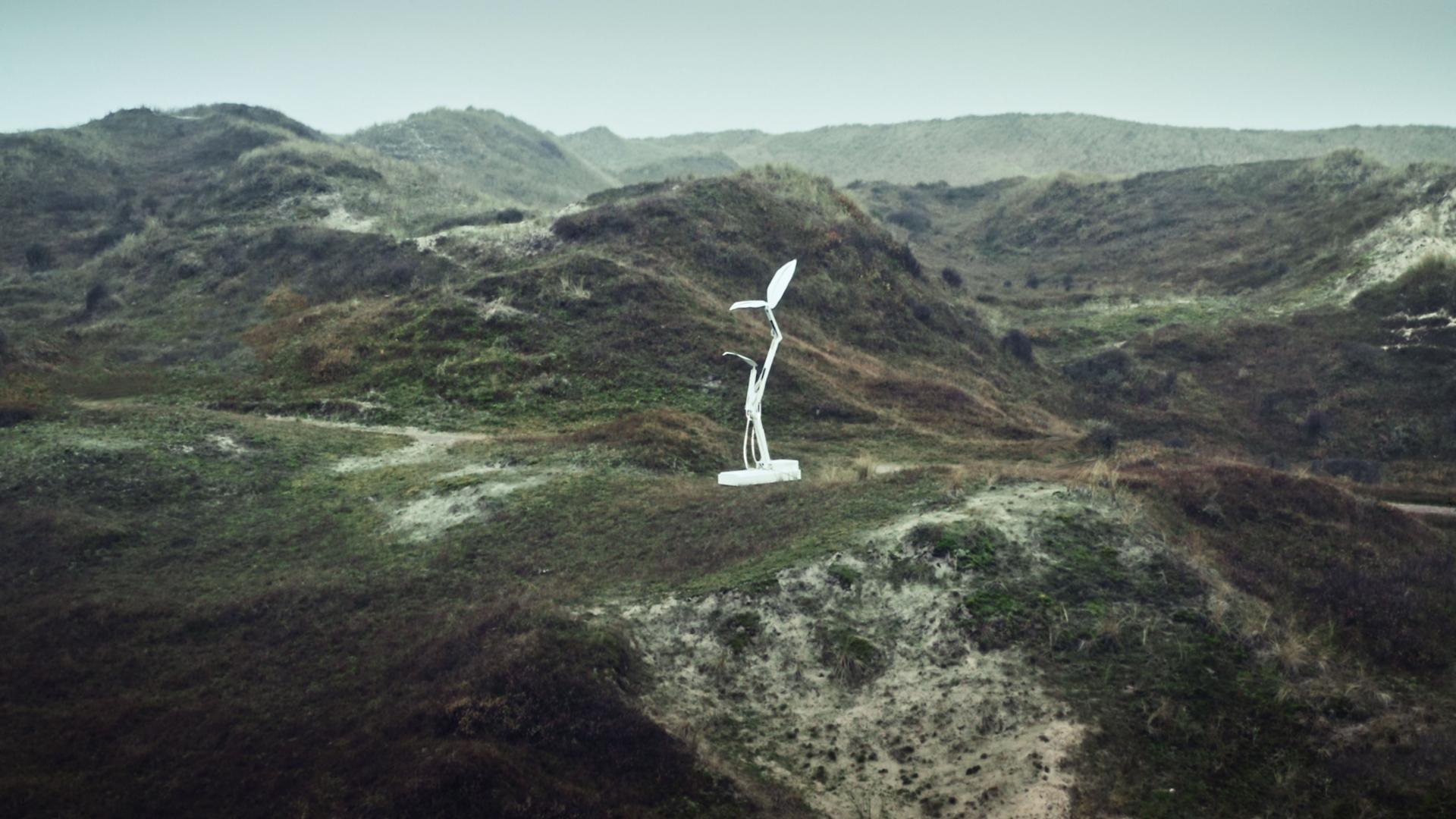'Econario' grows or declines based on future biodiversity scenario datasets.
With this 5-meter robotic, data-driven plant, ecological artist Thijs Biersteker and his Woven Studio bring to life biodiversity datasets (BII) from the Natural History Museum in London.
The work visualises how today’s political choices can cause biodiversity to grow or decline in the future.
Throughout the day, it reveals both sustainable and fossil-fuel scenarios, zooming in from global biodiversity all the way to Eindhoven—showing the impact of political policies by growing or declining.
The Science and Art of 'Econario'
The scientific data driving ‘Econario’ comes from the Biodiversity Intactness Index (BII), developed by Professor Andy Purvis and Dr. Adriana De Palma at the Natural History Museum in London. The BII measures how much biodiversity in a region remains, compared to a natural, undisturbed world, drawing on millions of datasets across plants, animals, fungi, and insects. It is one of the clearest global indicators of ecosystem integrity.
In ‘Econario’, this data is transformed from abstract numbers into movement. The artwork visualises socio-economic scenarios (SSP’s), turning dry projections into living motion that grows or declines depending on political and societal choices. A fossil-fuel–intensive pathway causes biodiversity to shrink, contracting the plant from its five-meter span. A business-as-usual scenario leaves it muttering along, echoing the slow continuation of loss. On a sustainable pathway, however, ‘Econario’ grows and flourishes, showing how protection and restoration can change the future.
At Dutch Design Week, the work zooms from a global perspective down to Europe, the Netherlands, and finally Eindhoven, making future scenarios tangible and personal.
 Free wifi available
Free wifi available
 Toilets available
Toilets available
 Fully wheelchair accessible
Fully wheelchair accessible
 Wheelchair friendly toilet available
Wheelchair friendly toilet available



